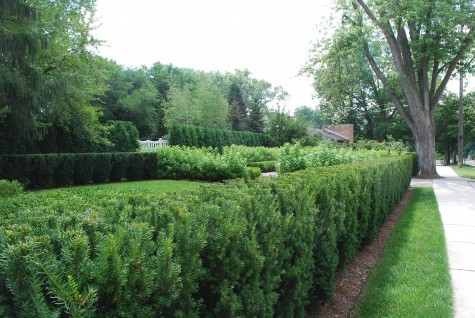 |
| If you're like me, you probably have a box just like this....stashed away in the garage. |
Given I live in Ontario, we don't have the same plants like the imported boughs (oregonea, princess pine, douglas fir or western cedar) and floral grade materials (eucalyptus, salal, magnolia). But there are so many other choices we can use to have a similar effect.
In this sample, I reused all our accents from the past 3 years. I added cuttings from plants such as:
1: Boxwood
2: Yews
3: Junipers
4: Ivy
5: Euonymus
6: Birch (also reused from past years)
7: Dogwood
Other selections you can use too:
- Holly
- Ilex
- Spruce
- Sumac
- Hydrangea
- Alder
- Cedar
- Rose-hips
- Pussywillow
I pruned all the cuttings in ways to promote a balanced habit. Do not butcher the best parts of the plant in order to fill your planter. Think of thinning and adjusting shape. Just layer and remember your accents can hide blunt ends.
Don't forget: the bottom branches off your live Christmas tree work great too!
Follow the directions on how to layer and place within your planter on one of my previous blog DIY posts and here...have fun designing.
 |
| Reuse and add anything that you have saved. |
Use what works for you and you'll be able to make beautiful arrangements that are welcoming for this Christmas season!
 |
| Here I just added some artificial dyed magnolia stems for a punch of red! |
Enjoy this Christmas season and perhaps plan for 2017's garden, by adding some plants which can carry you through designing Christmas planters for next season.
Merry Christmas, everyone!




















































